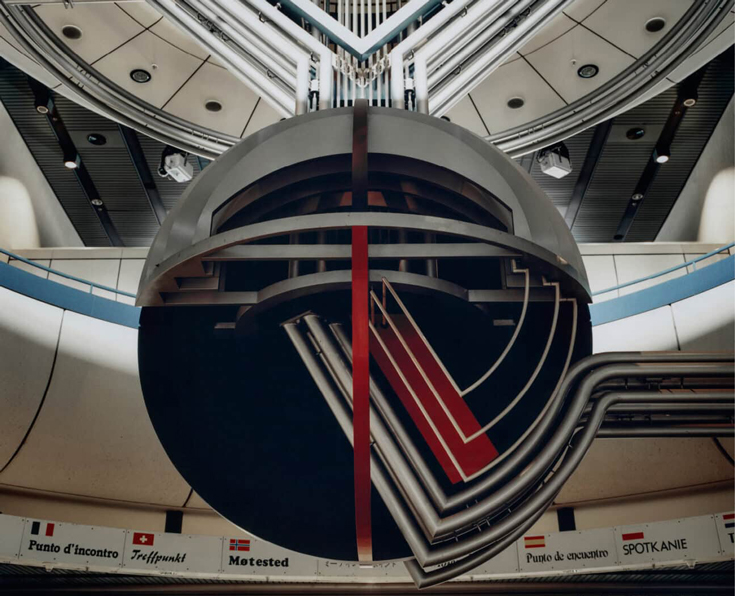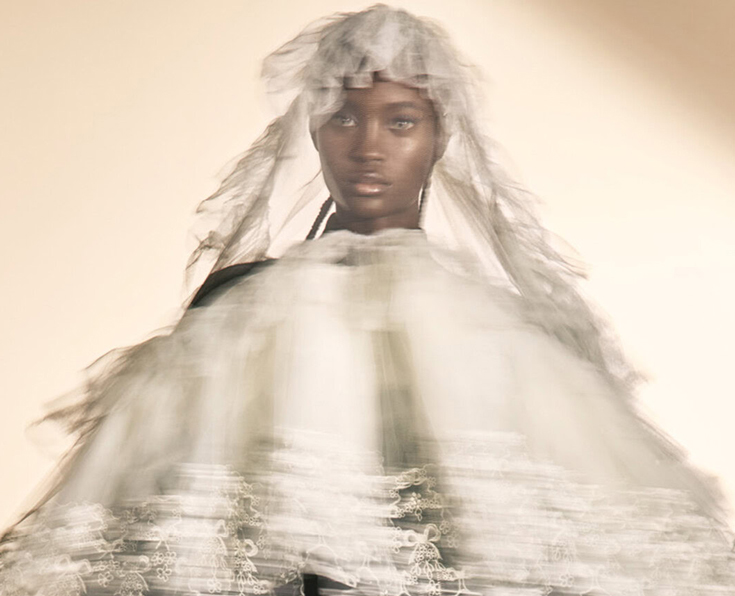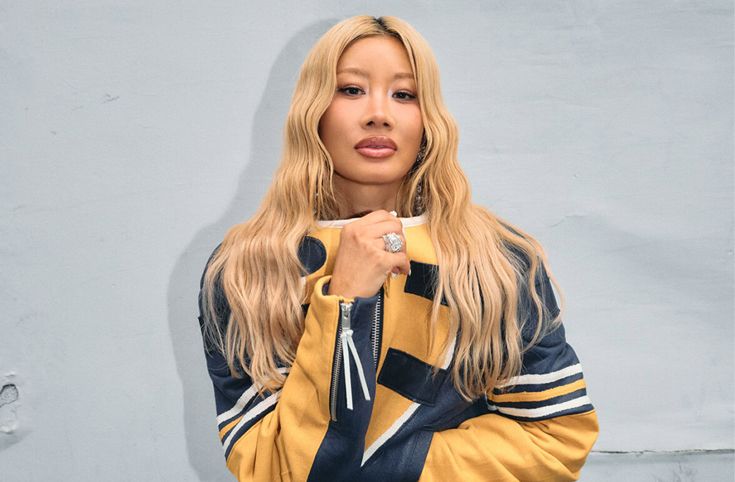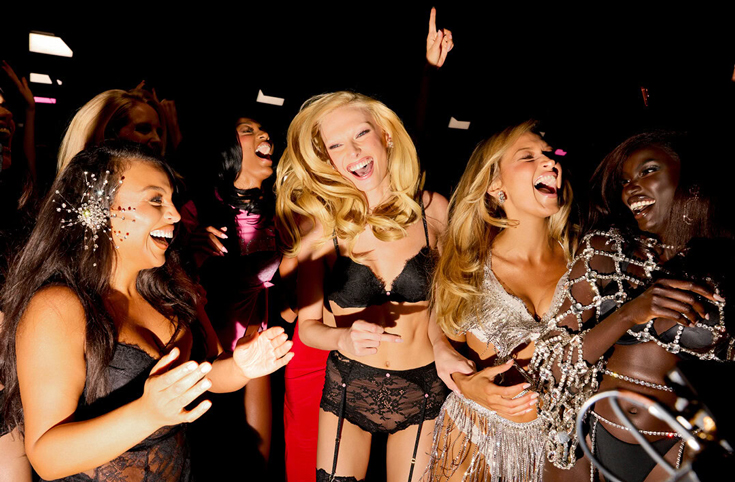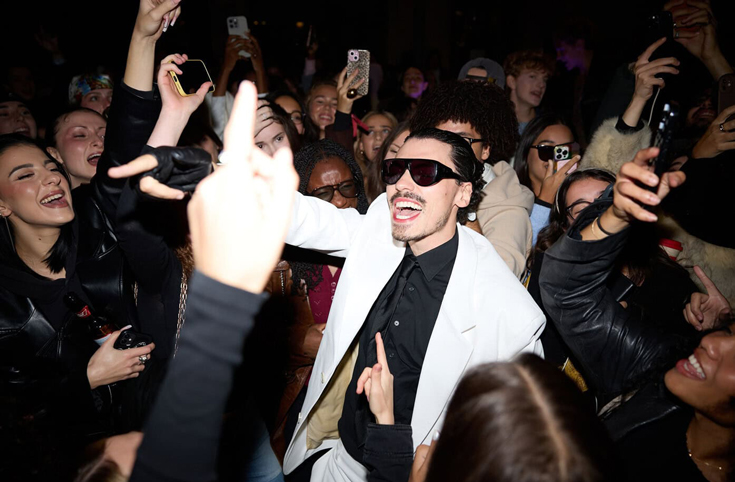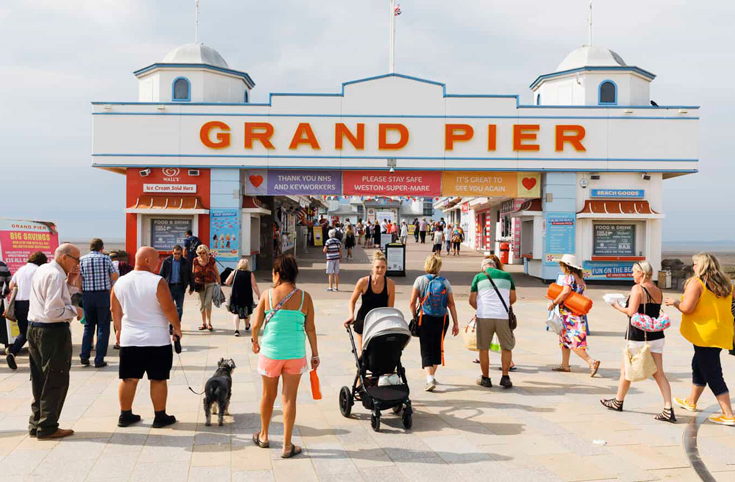TEN READS: THE POWER OF A FLOWER

From the issue, Tony Marcus writes about flowers as a symbol of peace and resistance:
I wasn’t around in the 1960s; I never witnessed “flower power” first-hand. I was a post-punk teenager who went to Bauhaus gigs. My bestie was the daughter of a famous ’60s guitarist (who treated her like shit) and we used to sniff amyl together. I had a crush on the school hippy, who was astral pretty. She invited me to her bedroom where she burned incense and played records by The Doors. We listened to Love Street over and over.
All the histories of the 1960s say “flower power” was a force. I still wonder if the Stones and Velvet Underground were less “flowery” than the Beatles because they were more conservative or just more caustic. I still like the way Lennon turned briefly into Allen Ginsberg. Lou Reed recalled a conversation with Warhol…
“He said, ‘Why don’t you write a song called Vicious,” Reed told Rolling Stone. “And I said, ‘What kind of vicious?’ ‘Oh, you know, vicious like I hit you with a flower.’ And I wrote it down literally.”
Flower power began with Ginsberg (he coined the term) and suggestions he made to the organisers of a 1965 peace march. Bring crosses, said Allen. Bring American flags, children’s toys, musical instruments and grandmothers. “We have to use our imaginations,” he said. “A spectacle can be made, an unmissable statement OUTSIDE the war psychology which is leading nowhere.”
And number one on his list…
“Masses of flowers – a visual spectacle – especially concentrated in the front lines. Front lines should be organized and provided with flowers in advance.”
It was George Edgerly Harris III, better known (to some) as Hibiscus, from beautiful, wild, queer performance group The Cockettes who was photographed putting a flower down the barrel of a National Guardsman’s rifle in 1967. I have never spent enough time studying The Cockettes. But I have loved them from the first time I saw their photos; skinny white men, long-haired like Christ, with beards, in drag with glitter and wings. They guest in Yayoi Kusama and Jud Yakult’s LSD-queer-sexy film Kusama’s Self-Obliteration. Sylvester, of You Make Me Feel (Mighty Real) renown, was in The Cockettes, too. But it was Hibiscus who put the flower in the barrel of the gun. Such a singular, powerful image was created in concept by two queer American artists (Hibiscus and Ginsberg). I hunted for a line that would connect Ginsberg’s travels in India with these flowers. I just about found it. From his Indian Journals, talking about a late-night walk in Varanasi, a city by the Ganges, dated 1962.
“Along came mincing an Indian devotee... and he was covered with flowers round his neck...”
The same day the Russians invaded, February 24th, a woman in Henichesk, southern Ukraine, gave sunflower seeds to Russian soldiers. The footage was shown widely, across the world. Including the translation of what she said:
“Take these seeds and put them in your pockets, so at least sunflowers will grow when you all lie down here. You came to my land. You are enemies. And from this moment, you are cursed.”
Four days later, Jill Biden wore a white mask with a sunflower, Ukraine’s national flower, printed on it. One week later, at the State of the Union address, Jill wore a blue silk LaPointe dress with a sunflower sewn in on the right cuff. What is a flower? It is a symbol.
I have never closed my eyes and asked myself, “What is a flower?’ So, I will do it now. And let some time pass in contemplative silence. And. Then. The answer. What is a flower?
Colour, growth and life on a vast scale. And no words. No meaning.
Keith Tyson might be the world’s most successful painter of flowers. There was a £350,000 sale, Nature Painting (Red), at auction. And he was recently invited to show alongside Monet in Paris at Marmottan. He can be cerebral; Tyson paints maths, physics, theory, Buddhist teaching, Chinese art… But he does a lot of flowers. Usually in vases.
“I’ve looked at it cross-culturally,” Tyson told Studio International, “[including] ikebana [the refined Japanese art of flower arranging] from Japan, Dutch still life, outsider artists and even Buddhist mandalas. The flower is really just the subject, but it’s not the content. The content is like the diversity and juice of the world. And there’s something about a flower. It’s colour, it’s there to attract, it’s a sexual organ, it has all this stuff and it just emerges: it doesn’t see itself, but it integrates with the rest of its environment.”
And more broadly…
“They’ve got this symbolism: they are transient, we anthropomorphise them, they really explore our condition in that way. Despite the fact of death, they do blossom.”
There is a garden in Kamakura, Japan, at the base of the ‘Hill of Cranes’ (part of the Tsurugaoka Hachimangu shrine) that was designed and built by Hõjõ Masako, a Buddhist nun and politician
in the 11th century. The original white lotuses she planted there still bloom. Young Japanese visit on dates, wearing rented kimonos. Her story is told in Mark Griffiths’ book The Lotus Quest. Her father, a warrior, spent his time practicing swordsmanship, archery, riding, hunting and fishing: “To general astonishment he was accompanied and often bested in these pursuits by Masako. The girl proved herself such a budding samurai that Tokimasa [her dad] bought her the best possible tutors in the martial arts. He encouraged her to eat with his retainers rather than with the womenfolk; to join in their councils…”
Masako married Yoritomo, the rebel leader of one of Japan’s civil wars. And designed her garden amid the conflict, seemingly not fazed by fear of defeat and possible death by knife and sword. As a local priest told Griffiths, “a samurai achieves victory by making the present as close to perfect as possible and reconciling himself with its passing.”
She and her husband won their battles and ruled Japan, together it is said. After he died, she took Buddhist vows but behind the scenes; from this garden “she spent almost as much time there in religious observance as she did in calculating military strategy.”
The lotus she planted is strong, notes Griffiths, with a “constellation of white flowers”.
The longevity of Masako’s lotus, still going after 1,000 years, is an aspect of flowers I hadn’t considered. But a rose painted in the 11th century is still recognisably a rose. Flowers are hard and enduring. They outlive us. We cut them, we paint them, we play with them. Last time Chanel let me torment their in-house nose with my ignorance, he confirmed that natural scent molecules can be “edited” to remove certain facets. I now wonder if the notes in certain perfumes are not so much of this or that flower but edits and remixes that have the ability to suggest elements of flowers. But florals in scents (and masculine scents) go way back; from Husain Haddawy’s translation of The Arabian Nights…
“Then they brought rosewater scented with musk in bowls of gilded crystal… we scented ourselves…”
One pattern in masculine perfumes is to wrap a rose in darkness. Chanel’s Anteaus is a rose that flowers in a lingering night made from what I think of (probably incorrectly) as darkened or Stygian lavender. I also like Olivier Cresp’s Ink for Akro where fleshy petals are scattered over something tar-like and violently noir. Maison Francis Kurkdjian’s L’Homme À la Rose is a creature of wit as it carries no obvious “masculine” note. But the dry-down is one of the driest. Chanel’s Bois des Îles has a sparkle harvested from a golden stamen. But it is not easy (for me) to say, “Oh it is this flower or that sandalwood”. Bois is like Monet; impressions and glances are edited to a haze. I would also wear Maison Crivelli’s Lys Sølaberg, which has the sticky, sensuality of a flower but is not obviously “floral”.
Some years after Hibiscus (and others) put flowers down the barrels of American guns, Ginsberg was shown the footage and asked what he thought.
“Flower power,” he said, “meant more than just walking around with flowers in your hair; it really meant the power of Earth itself, the dissolving of the authority of the Pentagon was symbolised by that moment…”
I want to believe Allen. I don’t want to accept the worst will always win. I don’t want to hear about the victories of the killers and the cruel. It is “the power of Earth itself”. That is the power it takes to stand up to a soldier with a curse of nature. That is the power that turns a gun into a vase. I need that power to give me strength. Because it is not flowers that are ephemeral, weak and fleeting. It is us, or the worst of us.
Collage art by David Lock, taken from Issue 20 of 10 Men Australia.




